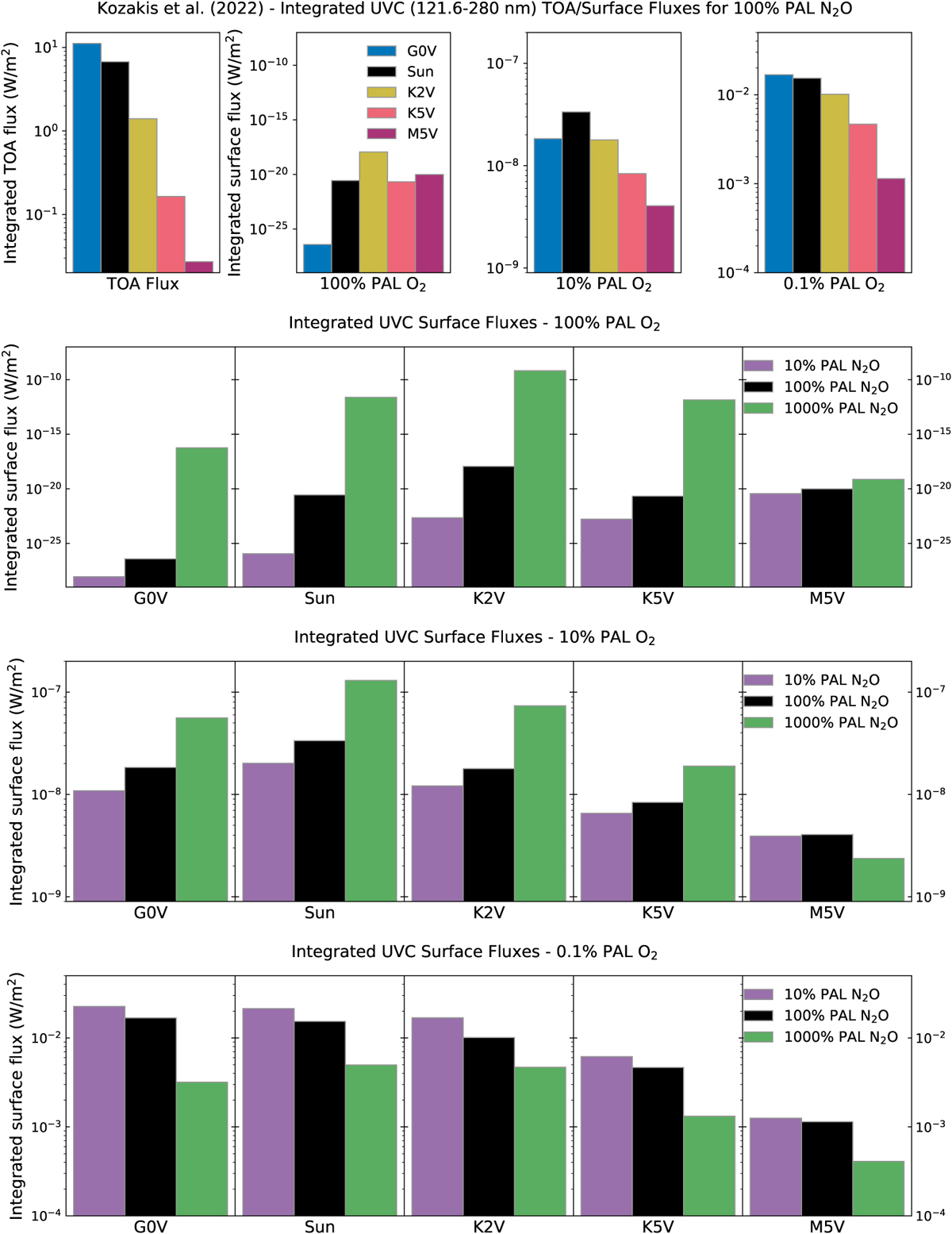Fig. 6

Download original image
UVC surface fluxes for planets around all hosts from Kozakis et al. (2022) with modern N2O (top) and with high and low N2O abundances from this study with O2 levels of 100% (second row), 10%, (third row), and 0.1% (bottom) PAL. The first panel in the top row indicates the top-of-the-atmosphere (TOA) flux for planets around all host stars, with the rest of the top row using the same y-axis limits for the corresponding O2 values used in the bottom three rows to facilitate comparisons. Results for 1% PAL O2 are extremely similar to those for 10% PAL O2 and are therefore not included. The most significant changes in UVC surface flux occur in models with higher O2 because the conversion from N2O to NOx is more efficient in higher O2 environments. Larger amounts of NOx have a greater impact on O3 either by depleting it with NOx catalytic cycles or producing it with the smog mechanism. While the results at 10% and 100% PAL O2 tend to show increased O3 shielding for low N2O models, this trend reverses at 0.1% PAL O2, where the low N2O models consistently receive more surface UVC. This is because at low O2 levels the effects of the smog mechanism become clearer as the Chapman mechanism is limited by the lack of O2.
Current usage metrics show cumulative count of Article Views (full-text article views including HTML views, PDF and ePub downloads, according to the available data) and Abstracts Views on Vision4Press platform.
Data correspond to usage on the plateform after 2015. The current usage metrics is available 48-96 hours after online publication and is updated daily on week days.
Initial download of the metrics may take a while.


